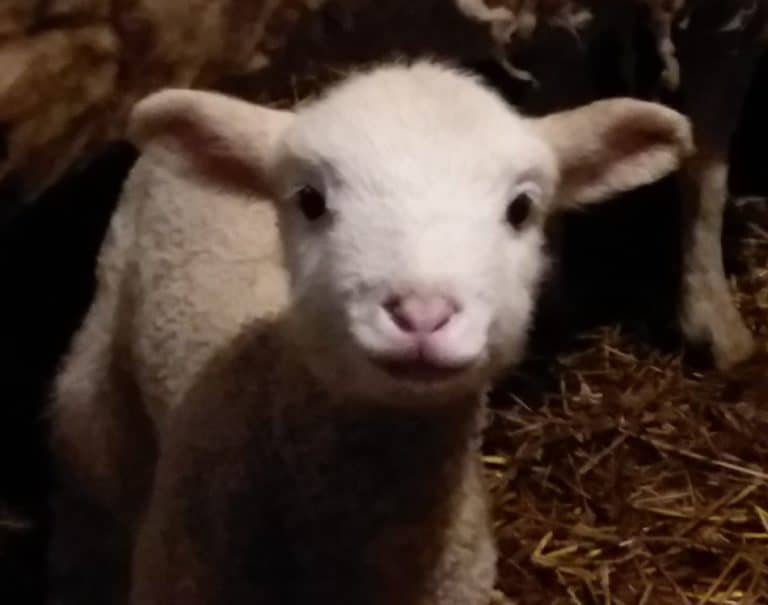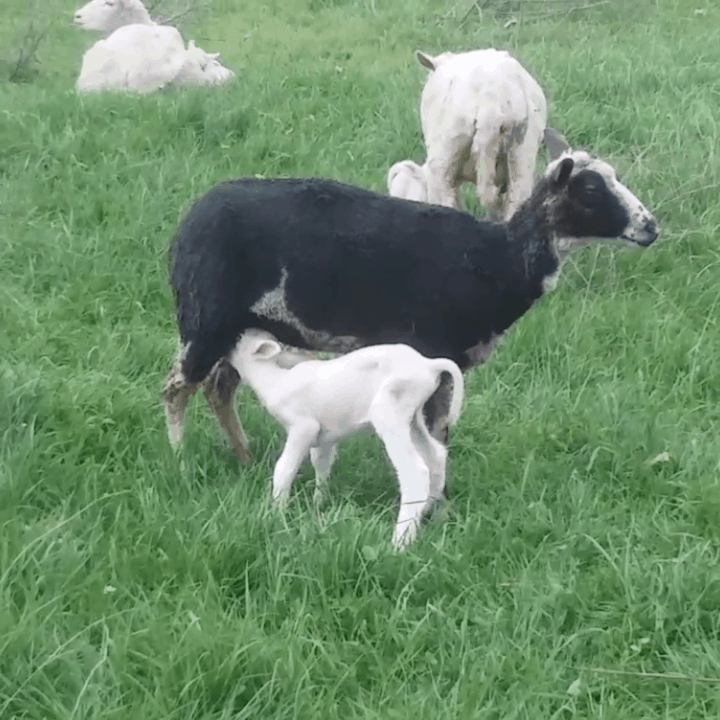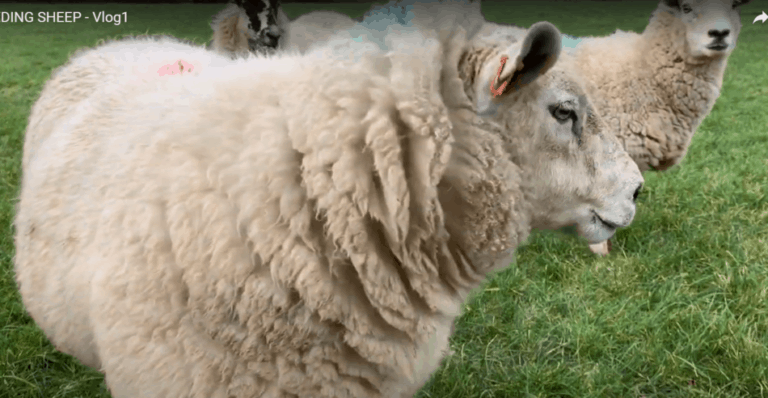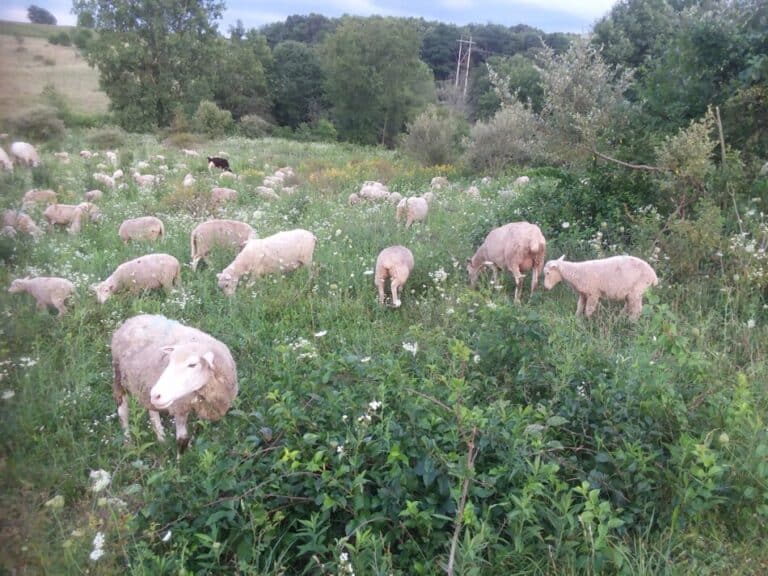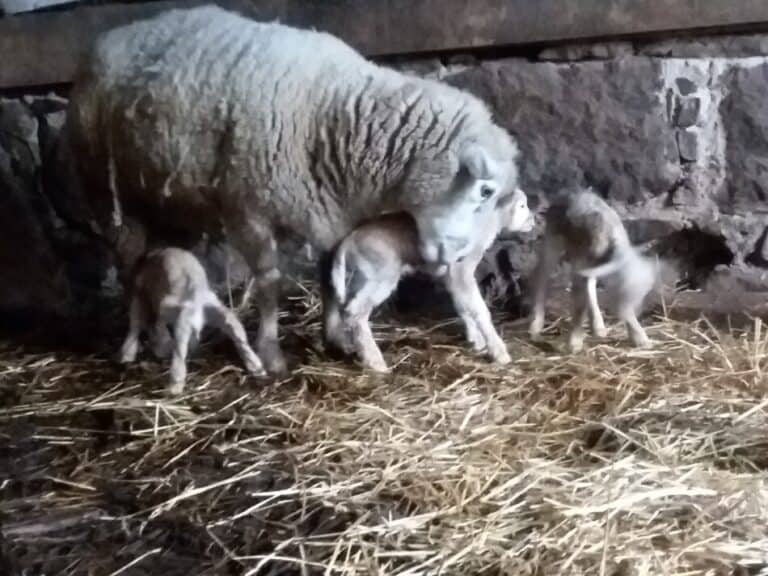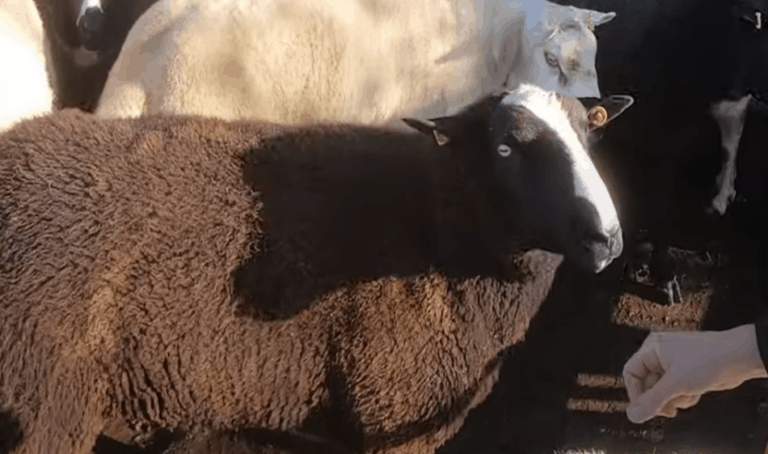Why Do People Eat Lamb And Not Sheep?
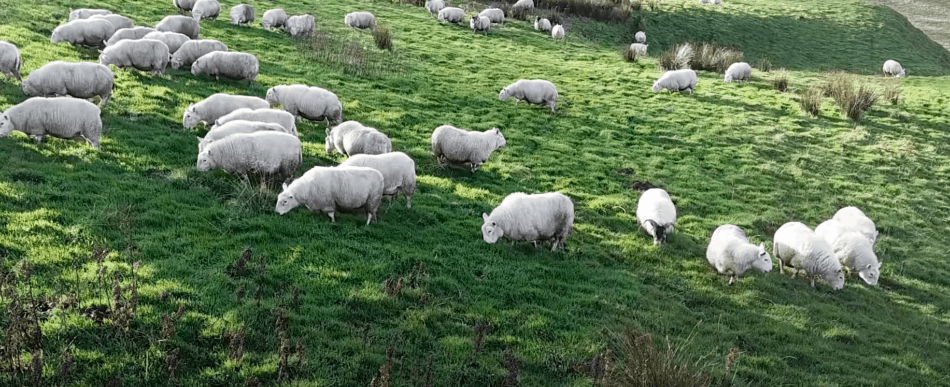
Lamb and sheep are confusing terms when applied to sheep for eating. What is the difference between the two?
People eat both lamb meat and sheep meat. The meat from a lamb is from an animal 4-12 months old, is called lamb and is more tender. Meat from a sheep over 12 months old has more flavor and is called mutton.
People commonly eat both mutton (meat from adult sheep) and lamb.
Generally, in the U.S. most people that are eating whole cuts like roasts and chops are eating lamb. This is because lamb is more tender.
But this all depends upon what you grew up eating and cooking in your area.
If you want just one nice meal for the family then a small roasting lamb is just the right size.
If you want more flavor and more pounds of cooked meat, like when you are roasting a whole animal for a party, then you need an older animal simply because it is bigger.
Is Raising Your Own Lambs For Meat Worth It? will walk you through the costs of raising and butchering your home grown lamb, compared to the cost of buying packaged lamb.
Lamb vs. mutton is based on age
The difference between lamb and mutton is strictly age of the animal when it was slaughtered.
The meat from a sheep that is under one year of age is called lamb. A sheep that is older than one year of age at slaughter is called mutton.
If you would like to know more about the differences between sheep and lambs click here for another article I wrote that includes a more in depth explanation.
The U.K. and Australia have an additional sheep category called hogget, which is a young sheep between 12-24 months.
Some hoggets are used for meat and some are to be breeding stock, mainly ewe lambs that will have their first lambs at about 2 years of age, so they are still growing.
Here is a farm in Australia, Border Park Organics that sells hogget meat if you want to check out what they say about it.
In the U.S. we do not have a separate category for the 12-24 month sheep, we call all sheep over a year old sheep. No matter if the ewe is 1.5 years old or 6.5 years old, she’s a sheep.
The breed of the sheep and the way it was raised will influence the size, flavor and fat covering at slaughter.
No matter how the animal was raised the terms remain based on age. Some breeds will be bigger, some breeds will be smaller, none the less it is based on age.
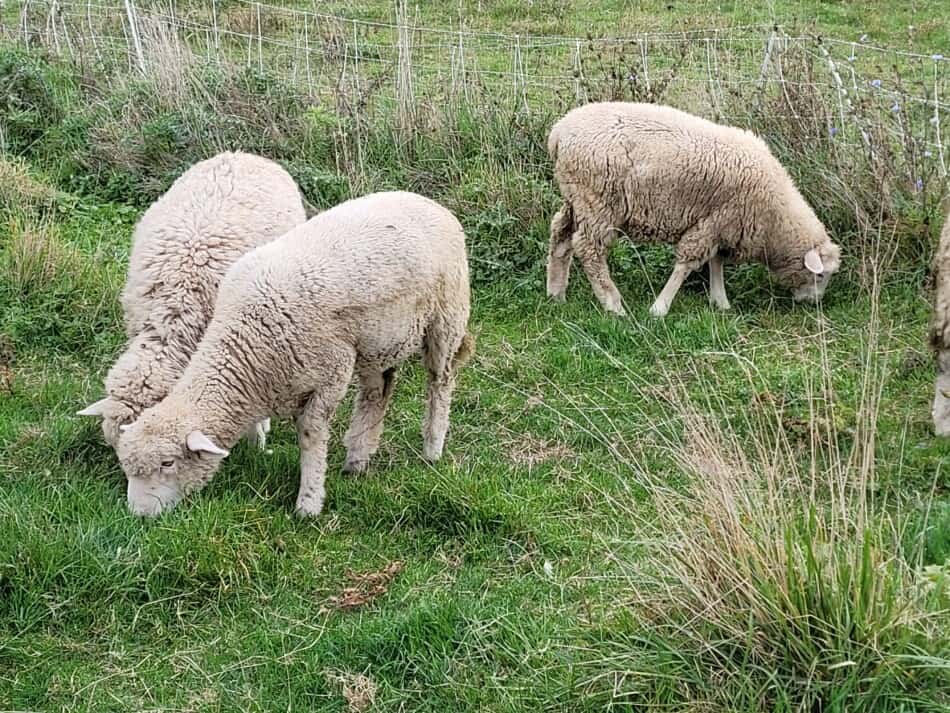
Lamb meat is not from baby lambs
Lamb meat is not from baby lambs. Lamb meat is usually from young sheep that are 6-8 months old.
This one throws people, especially if you grew up eating cuts from other larger animals. Lamb chops are smaller but the lamb it came from would have been just shy of adult size.
The term “lamb” when used for packaged meat is meant to distinguish that the animal the meat came from is tender and not mutton, which is stronger flavored and from an adult sheep.
Our market lambs are normally 90-100 pounds, with a low range of 70-75 for a few that are smaller framed.
Some lambs are sold as roasters, which are smaller lambs normally cooked whole, that are 55-60 pounds and about 3 months old when they are sold.
Lambs that are under 55 pounds are normally sold to another person to feed them to higher weights.

Market lambs are 6-8 months old before they are sold
The lamb you are eating was born within the past year, but lamb is actually one of the older animals we eat for meat.
Lambs are generally six months old or more at slaughter, where as other popular meat animals tend to be younger, with the exception of cattle.
Here are some examples of meat animals and their ages at slaughtering:
| Meat Animal | Age at slaughter |
| Lamb | 6-8 months roasters: 2-3 months |
| Chicken | 47 days for broilers (common commercial meat chickens) |
| Pigs | 5-6 months roasters: 3-4 months |
| Cattle | 12-18 months veal: 6 months |
Most lambs are raised on pasture
Lamb is generally raised on pasture at least for part of it’s life. While there are a few farms keeping lambs inside year round, most have sheep outside on a pasture.
Sheep For Profit goes over the business aspects of raising lambs, including the options of when to sell sheep and what prices we are getting when we sell market lambs.
This depends greatly upon the area where it was raised, the farming practices used there and the challenges the area faces like parasites and/or predators.
The first picture shows ewes on pasture grazing. They will raise lambs here, as well, image from The Sheep Game (YouTube).
Sheep that are raised in really large flocks like in the western U.S. or on a sheep station in Australia will not have been fed anything other than grass and other forage plants that were available to the flock.
These lambs would be 100% grass fed and finished.
Read Why Lamb Is The Most Ethical Meat To Eat, at Independent.co.uk, by Lizzie Rivera.
In other areas of the sheep raising world where the land is more limited or parasites are very problematic then putting lambs on grain and hay in a barn is an option.
We know multiple sheep farmers who keep the younger stock (lambs) in the barn.
The lambs are kept inside and fed to keep them growing well, since, in this farmer’s situation, the animals are better cared for in the barn on feed than outside.
Keeping lambs on grain works well when there is an economical source of grain and an available lamb appropriate barn space.
There are two other big factors that make keeping lambs off of pastures something to consider. One is to break the parasite cycle.
If your pastures have a large parasite load (lots of parasites waiting for some lamb to come along and eat the grass they are on) lambs are the most likely to have compromised health due to parasite infestation.
The second factor is predators. When a wild animal, like a coyote trots in to get a meal it generally is looking to swipe a lamb. If the lamb is in the barn this doesn’t happen.
It’s not that pasture is better than a roomy barn, it’s more about the tradeoffs and figuring out what is best for the situation, which has to include the people, the sheep and the land.
Eating lamb is healthy
Lamb is a very healthy meat. Ruminants like sheep and cattle, are a wonderful meat choice!
Lambs can be raised on grass alone, no grain or confinement needed.
A lamb just needs water, solar energy and nutrients from the soil, along with milk from mom and a few licks on the salt block now and again.
Lambs are the most likely of all livestock to be raised in a way that you want your meat to be raised, meaning fresh air and plenty of space.
This is simply because lambs do not handle stress well, so they are not good candidates for a confinement system.
Other meat animals that are packed into confinement barns are able handle the stress of tight quarters, respond well to medications or just grow fast enough to not be around long, like a broiler.
Sheep do not work this way. Stress is a huge problem for lambs so even if you wanted to cram them into a building, you can’t.
The nature of a lamb necessitates that the lamb be treated well.
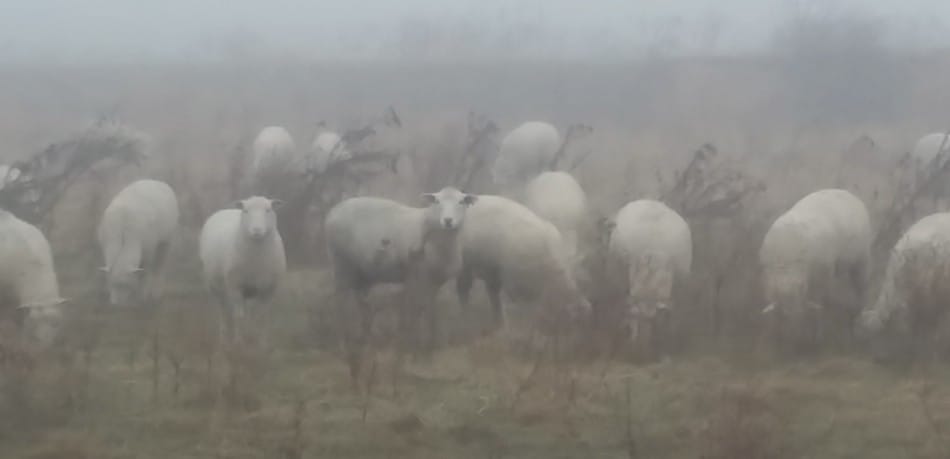
Lamb is ideal for no electricity areas
Some areas of the world that eat lamb have different values and resources than we do regarding food.
Here I’m specifically referring to freshness of the meat and available refrigeration.
Many cultures are much more into eating fresh, no refrigeration, and certainly not freezing meat.
In this case the size of the carcass has to be something they can use up quickly, so the animal chosen for slaughter is of the size the group needs and can use right away.
This is definitely not American style thinking, so it’s not the first thing to come to mind.
It is how many lamb and mutton eaters all over the world decide which animal to eat.
You can eat lamb rare
Sure you can. You can eat any cut of meat as rare or as well done as you would like it to be. The exception to this is ground meat.
When the animal is slaughtered, any of the trimmed off pieces of meat that do not fit well into a higher value cut, like chops, will be put together and ground.
The entire carcass could be ground, but normally it is just the trimmed off edges.
Unless the animal is carefully slaughtered, there is a risk of bacteria contamination from the digestive tract contents getting on the meat, specifically the poop.
The cuts of meat that are not exposed to the potential contamination can be eaten rare, like steaks.
Anything that is ground up has the potentially contaminated meat mixed throughout so it needs to be fully cooked before eating.
Really, this is a great reason to get meat from your local butcher, they take their time and do things right. The risk of contamination of the meat is much lower at a smaller slaughterhouse.
The mega slaughtering plants kill and process thousands of animals a day. That means they have to go super fast. Notice I didn’t say super careful, just super fast.
In the big slaughterhouses the trimmed bits are all put into one huge grinder and ground together.
This means that even one mess up with one poop contaminated carcass is now spread through hundreds of pounds of ground meat.
Do yourself a favor, buy from a local slaughterhouse.
Lambs grow more for the feed eaten
From a feeding perspective, lambs will grow more for the feed you give them.
This is called the feed to gain ratio and it applies to any feed the sheep would eat, grass, hay or grain.
Once a lamb reaches full body size, any additional calories go to fat and maintenance needs which the sheep farmer does not get paid for when the lamb is sold but will be more costs put into raising the lamb.
Once a lamb gets old enough and big enough to be called a sheep it still eats and needs looked after every day but is not worth any more money as a market animal.
It makes sense from a money perspective to sell the lambs once they have reached their peak condition and growth.
We sell our lambs in the 10-12 month range. This means we are selling a lamb that is 90-100 pounds and looks like an adult.
Many lambs are sold before winter
The majority of livestock owners want to reduce the stock they will be keeping (and feeding) over the winter, so lambs and other stock are sold before they need to be brought inside due to weather.
Many market animals are born in the spring and kept to eat the grass through the summer then sold in the fall or early winter.
Keeping the lambs inside means taking them all their food and water and handling the manure, all for the same pay as a farm that had the lambs outside the whole time.
More work for the same results, not an economical plan.
Any lambs kept for breeding stock will stay, but otherwise market animals are sold before the cost of keeping them goes up without corresponding returns.

